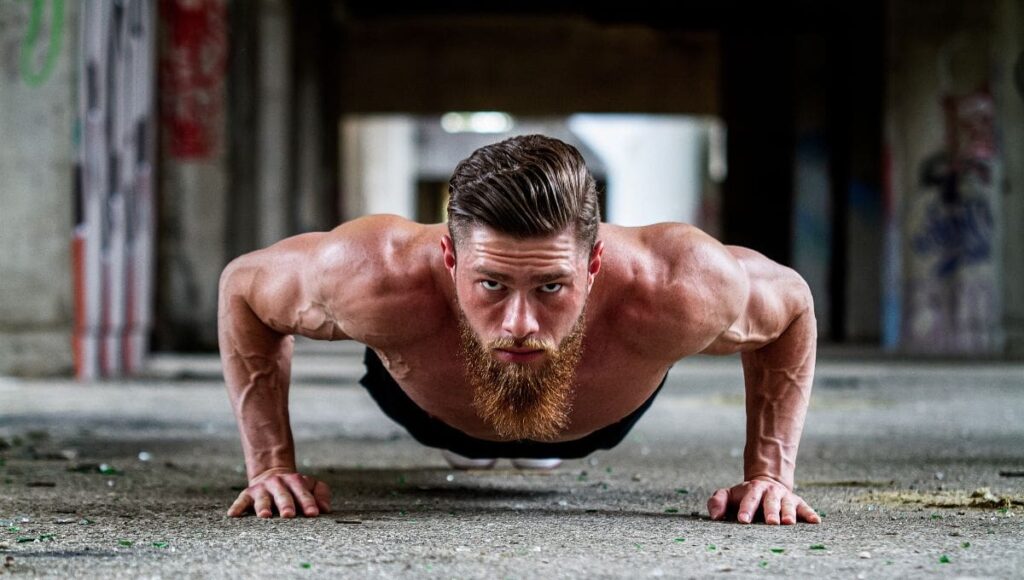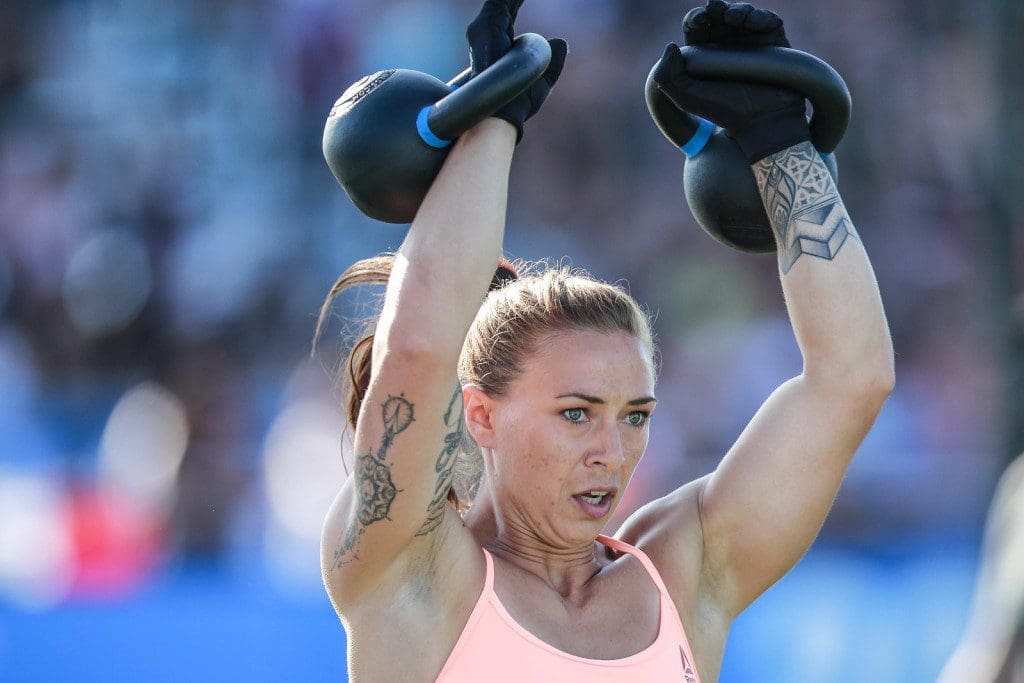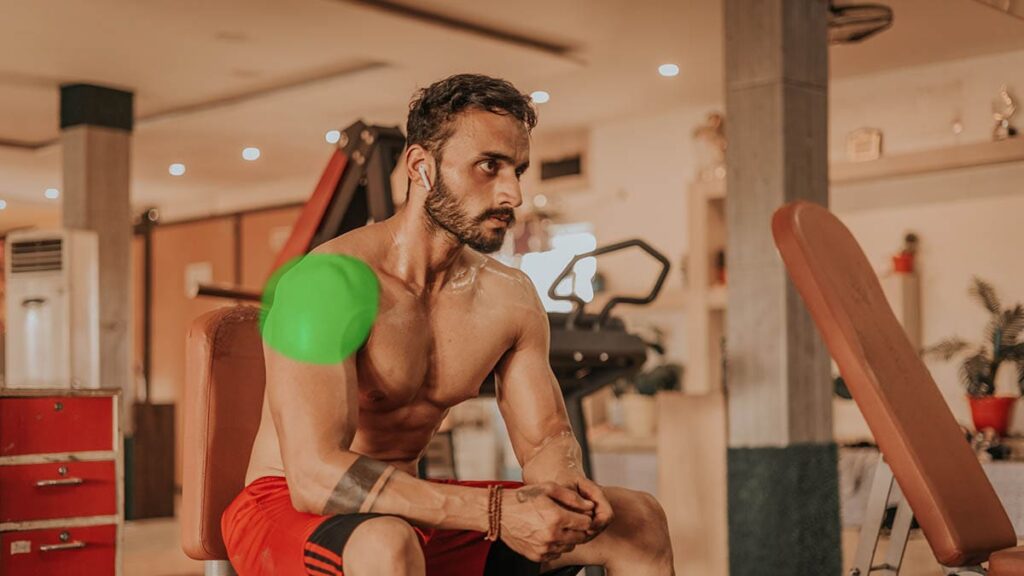The quest for a balanced and strong physique invariably leads us to focus on one of the most pivotal yet complex parts of the body: the shoulders.
The shoulders are not just a symbol of strength and stability; they play a crucial role in almost every movement we perform, from lifting and pushing to throwing and swinging.
This intricate anatomy comprises several muscles, including the deltoids, which are themselves divided into anterior, lateral, and posterior heads, each responsible for different movements and functions.

The shoulder’s complex structure means that achieving well-rounded development requires more than just a few basic exercises. It necessitates a targeted approach that engages all the major parts of the shoulder.
Whether you’re looking to enhance your physique for aesthetic reasons or aiming to improve your functional strength for sports and daily activities, the right exercises can make all the difference.
In this article, we will introduce three key exercises specifically designed to target the entire shoulder complex.
These exercises have been carefully selected to ensure that you work every part of your shoulders, promoting balanced growth, improved strength, and increased mobility. By incorporating these exercises into your routine, you can build the shoulders of your dreams—shoulders that are not only visually impressive but also capable of performing a wide range of movements with ease and efficiency.
Understanding Shoulder Anatomy
Before delving into the exercises that will sculpt your dream shoulders, it’s essential to grasp the basic anatomy of the shoulder and understand the functions of its muscles. The shoulder is a complex joint, renowned for its wide range of motion and versatility. At the heart of shoulder anatomy are the deltoid muscles, which cap the shoulder joint and are divided into three distinct sections: the anterior (front), lateral (middle), and posterior (rear) deltoids.
- Anterior Deltoids: These are located at the front of your shoulder and are primarily responsible for shoulder flexion. This means they’re engaged when you’re performing movements that bring your arm forward and up, such as front raises or pressing movements.
- Lateral Deltoids: Found on the side of the shoulder, the lateral deltoids are crucial for shoulder abduction, where the arm is lifted away from the body to the side. They play a vital role in giving the shoulder its width and rounded appearance.
- Posterior Deltoids: Positioned at the back of the shoulder, these muscles are responsible for shoulder extension and external rotation. They’re engaged during movements that involve pulling your arm backward, contributing to the overall balance and stability of the shoulder.
In addition to the deltoids, the shoulder complex also includes the rotator cuff, a group of muscles and tendons that stabilise the shoulder joint. While not the primary focus for building mass, ensuring the rotator cuff is strong and healthy is vital for preventing injuries and maintaining the shoulder’s full range of motion.

For symmetrical shoulder development and to prevent imbalances that could lead to injury, it’s crucial to target all three deltoid sections equally. By doing so, you can achieve a well-rounded, aesthetic look that enhances your physique’s overall appearance and improves your functional strength and mobility. The exercises we will explore are designed to engage these areas comprehensively, ensuring your shoulder workout is balanced and effective.
Exercise 1 – The Overhead Press
The overhead press is a fundamental strength exercise that targets the shoulders, engaging primarily the anterior and lateral deltoids. It’s a versatile exercise with several variations, including the use of barbells or dumbbells and the choice between standing or seated positions. Each variation brings its own set of benefits and challenges, allowing you to adapt the exercise to your fitness level and goals.
Variations of the Overhead Press
- Barbell Overhead Press: Typically performed standing, this variation allows for the use of heavier weights, fostering significant strength and muscle gains. The barbell overhead press demands excellent form and core stability, as you’re required to balance the weight evenly across both arms.
- Dumbbell Overhead Press: This variation can be done either standing or seated and allows for a greater range of motion compared to the barbell press. Using dumbbells requires each side of the body to work independently, helping to correct imbalances and improve overall shoulder stability.
- Standing vs. Seated: The standing overhead press engages the core and lower body to stabilize the lift, providing a more comprehensive workout. In contrast, the seated version focuses more directly on the shoulders, reducing the involvement of the core and legs.
How to Perform the Overhead Press Safely
Starting Position: Begin with your feet shoulder-width apart. If using a barbell, grip it slightly wider than shoulder-width. For dumbbells, hold them at shoulder height, elbows bent and palms facing forward.
- The Lift: Brace your core and squeeze your glutes to stabilize your body. Press the weight upwards in a straight line, extending your arms fully above your head without locking your elbows. Ensure the barbell or dumbbells move just in front of your face as you lift.
- The Descent: Lower the weight back to the starting position in a controlled manner, keeping the tension in your shoulder muscles.
- Breathing: Inhale as you prepare to lift and exhale as you press the weight overhead.
Benefits of the Overhead Press
The overhead press is an excellent exercise for building strength and mass in the anterior and lateral deltoids. Its effectiveness lies in the compound nature of the movement, requiring the simultaneous engagement of multiple shoulder muscles along with the triceps.
Performing the overhead press can lead to significant improvements in shoulder aesthetics, giving the deltoids a fuller, more rounded appearance.
Moreover, this exercise enhances functional strength, benefiting a wide range of daily activities and sports that involve pushing motions.
Exercise 2 – Lateral Raises
Lateral raises are a quintessential exercise for targeting the lateral deltoids, which are crucial for adding width and shape to your shoulders.
This exercise is highly effective in isolating these muscles, ensuring they receive focused attention for growth and development. Lateral raises can be performed with various equipment, including dumbbells, cable machines, or resistance bands, allowing for versatility and progression in your workout routine.
How to Perform Lateral Raises Correctly
- Starting Position: Begin by standing with your feet shoulder-width apart, holding a pair of dumbbells at your sides with your palms facing inwards. Keep a slight bend in your elbows to protect the joint throughout the movement.
- The Lift: Exhale as you lift the dumbbells out to your sides, maintaining a slight bend in your elbows and keeping your wrists in a neutral position. Continue to raise the weights until your arms are parallel to the floor. The movement should be controlled and initiated from your shoulders, not your hands.
- Peak Contraction: Once your arms reach parallel, pause for a moment to maximise the contraction in your lateral deltoids. Ensure that your shoulder muscles are doing the work, rather than relying on momentum.
- Lowering the Weights: Inhale as you slowly lower the dumbbells back to the starting position in a controlled manner. Avoid letting the weights drop suddenly, as maintaining tension throughout the descent is crucial for muscle engagement.
- Repetition: Repeat for the desired number of repetitions, typically between 8 to 12 for muscle growth.
Tips for Maximising Muscle Engagement and Avoiding Injury
Mind-Muscle Connection: Focus on feeling the lateral deltoids working throughout the exercise. Visualising the muscle fibres contracting can enhance engagement and effectiveness.
Avoid Swinging: Keep your body stationary, and avoid using momentum to lift the weights. Swinging can reduce the effectiveness of the exercise and increase the risk of injury.
Proper Weight Selection: Use a weight that allows you to complete your set with proper form. It’s better to perform the exercise correctly with lighter weights than to compromise your form with heavier ones.
Incorporating Lateral Raises into Your Workout: Lateral raises are most effective when included as part of a comprehensive shoulder routine. Consider performing them after compound exercises like the overhead press to ensure your shoulders are adequately pre-exhausted. This strategy allows for balanced growth by ensuring that all parts of the deltoids are targeted throughout the workout.
Lateral raises are indispensable for developing the lateral deltoids, contributing to a broader, more defined shoulder appearance. By following these detailed instructions and incorporating this exercise into your routine, you can achieve balanced growth and sculpt the well-rounded shoulders you desire.
Exercise 3 – Bent-over Reverse Flyes
Bent-over reverse flyes are a pivotal exercise for targeting the often-neglected posterior deltoids. This part of the shoulder plays a crucial role in achieving a balanced, fully developed shoulder appearance and is essential for proper posture and shoulder function.
By focusing on the rear deltoids, bent-over reverse flyes help in rounding off the shoulder development, ensuring that all aspects of the deltoid muscle are engaged and strengthened.
Proper Form and Execution
Starting Position: Begin by standing with your feet shoulder-width apart, holding a pair of dumbbells in front of you with your palms facing each other. Hinge at the hips to bend forward, keeping your back straight and nearly parallel to the floor. Ensure your knees are slightly bent to maintain stability.
The Movement: With a slight bend in your elbows, exhale as you lift the dumbbells to the sides in a wide arc until they are in line with your shoulders. Keep your torso stationary throughout the movement to ensure the focus remains on the posterior deltoids.
Contraction and Return: Once the dumbbells reach shoulder level, pause and squeeze your shoulder blades together to maximise the contraction in the posterior deltoids. Inhale as you slowly lower the dumbbells back to the starting position, maintaining control and tension in the muscles throughout the descent.

Repetition: Complete the desired number of repetitions, typically 8-12 reps for muscle growth, ensuring to maintain proper form and controlled movements throughout each set.
Ensuring Effectiveness and Safety
- Maintain Control: Avoid the temptation to use momentum to lift the weights. The movement should be slow and controlled to maximise muscle engagement and minimise the risk of injury.
- Focus on Posture: Keeping your back straight and core engaged throughout the exercise helps in protecting your spine and ensures the correct muscles are targeted.
- Select Appropriate Weights: It’s important to use weights that allow you to perform the exercise with proper form. Overloading can lead to compensatory movements that diminish the exercise’s effectiveness and increase injury risk.
Integrating Bent-over Reverse Flyes into Your Shoulder Routine
To achieve comprehensive shoulder development, incorporate bent-over reverse flyes towards the end of your shoulder workout. This placement ensures that the anterior and lateral deltoids are already fatigued, allowing for focused attention on the posterior deltoids. Additionally, since this exercise also engages the muscles of the upper back, it can serve as a bridge into exercises targeting these areas, creating a well-rounded upper body training session.
Bent-over reverse flyes are essential for sculpting the posterior aspect of the shoulder, contributing to a balanced and aesthetically pleasing shoulder silhouette.
By adhering to these guidelines for proper form and execution, you can safely incorporate this exercise into your routine, ensuring comprehensive development and strength across the entire shoulder region.
Incorporating These Exercises into Your Routine
To achieve the shoulders of your dreams, it’s essential to integrate the overhead press, lateral raises, and bent-over reverse flyes into your workout routine strategically. The frequency, volume, and intensity of these exercises can be adjusted according to your fitness level, goals, and overall training program.
How to Combine HIIT and LISS to Lose Fat Faster
Frequency of Shoulder Workouts
For optimal shoulder development, aim to train your shoulders at least twice per week. This frequency ensures that the muscles are stimulated sufficiently to promote growth, while also allowing enough recovery time to prevent overtraining and injury. If you’re incorporating these exercises into a full-body workout routine, ensure that you’re allowing at least 48 hours of rest before targeting the shoulders again.
Sets, Repetitions, and Rest Periods
Beginners: Start with 2-3 sets of 10-12 repetitions for each exercise. This volume is enough to stimulate muscle growth without overwhelming your body. Rest for 60-90 seconds between sets to allow for recovery while maintaining a challenging workout.
Intermediate to Advanced: As you progress, increase the sets to 3-4 and adjust the repetitions according to your goals. For muscle growth, aim for 8-12 reps; for strength, 4-6 reps with heavier weights might be more appropriate. Rest periods can be shortened to 60 seconds for endurance and hypertrophy or lengthened to 2-3 minutes for strength-focused workouts.
Progressive Overload and Proper Technique
- Progressive Overload: To continuously improve and develop your shoulders, it’s crucial to implement the principle of progressive overload. This means gradually increasing the weights, volume (sets and reps), or intensity of your workouts over time. Progressive overload challenges your muscles to adapt and grow stronger.
- Proper Technique: Always prioritise proper form and technique over lifting heavier weights. Incorrect form not only reduces the effectiveness of the exercise but also significantly increases the risk of injury. If necessary, reduce the weight to ensure you can perform each exercise with perfect form.
- Variation: To prevent plateaus and maintain progress, consider varying your exercises, grip, and equipment used every few weeks. This variation can help target the shoulder muscles from different angles and promote well-rounded development.
Incorporating the overhead press, lateral raises, and bent-over reverse flyes into your routine with the right approach to frequency, volume, and intensity will set you on the path to achieving strong, balanced, and aesthetically pleasing shoulders.
Remember, consistency in your workouts, along with attention to nutrition and recovery, are key to realising your shoulder development goals.
Section 6: Additional Tips for Shoulder Development
Achieving the shoulders of your dreams extends beyond just performing the right exercises. Proper warm-up, nutrition, and rest are equally important to ensure effective muscle growth, recovery, and injury prevention. Incorporating these additional tips into your routine will help you maximise your shoulder development safely and sustainably.
Importance of Warming Up and Shoulder Mobility Exercises
Warming Up: Begin each workout with a general warm-up to increase your heart rate and blood flow to the muscles. Follow this with dynamic stretches and mobility exercises specifically targeting the shoulder region.
Exercises like arm circles, band pull-aparts, and shoulder pass-throughs can improve flexibility and reduce the risk of injuries.
10 Best Exercises to Lose Fat At Home
10 Rules to Never Have Belly Fat Again
Shoulder Mobility: Incorporating specific shoulder mobility exercises into your routine can enhance your range of motion and performance in shoulder workouts. Improved mobility allows for more effective engagement of the shoulder muscles during exercises.
Nutritional Tips for Muscle Growth and Recovery
Protein Intake: Protein is crucial for muscle repair and growth. Ensure you’re consuming enough protein by incorporating lean meats, fish, dairy, and plant-based proteins into your diet. Aim for at least 1.6 to 2.2 grams of protein per kilogram of body weight daily, distributed across multiple meals.
Balanced Diet: Alongside protein, your body needs a balance of carbohydrates, fats, vitamins, and minerals to fuel your workouts and recovery. Whole grains, fruits, vegetables, and healthy fats should all be part of your diet to support overall health and muscle growth.

The Role of Rest and Recovery in Achieving Muscular Shoulders
Adequate Rest: Muscles grow and repair while you rest, not while you’re working out. Ensure you’re getting enough sleep each night (7-9 hours) to promote muscle recovery and growth.
Active Recovery: Incorporating light activity on rest days, such as walking or yoga, can help maintain blood flow to the muscles, aiding in recovery without overtaxing the body.
Conclusion
We’ve explored three key exercises—the overhead press, lateral raises, and bent-over reverse flyes—that are essential for building strong, well-defined shoulders. By incorporating these exercises into your routine, focusing on proper form, and progressively overloading your muscles, you can achieve the shoulder development you desire.
Remember, the journey to achieving your dream shoulders requires consistency, patience, and attention to detail. Adjust your workout plan as necessary to meet your individual needs and goals, and don’t forget the importance of warm-up, nutrition, and rest in your overall strategy.
How to Reduce Hunger While Dieting
The path to muscular, aesthetically pleasing shoulders is a rewarding one. With dedication and the right approach, you can build the strength and definition you’ve always wanted. Keep pushing forward, stay focused on your goals, and enjoy the process of sculpting the shoulders of your dreams.






